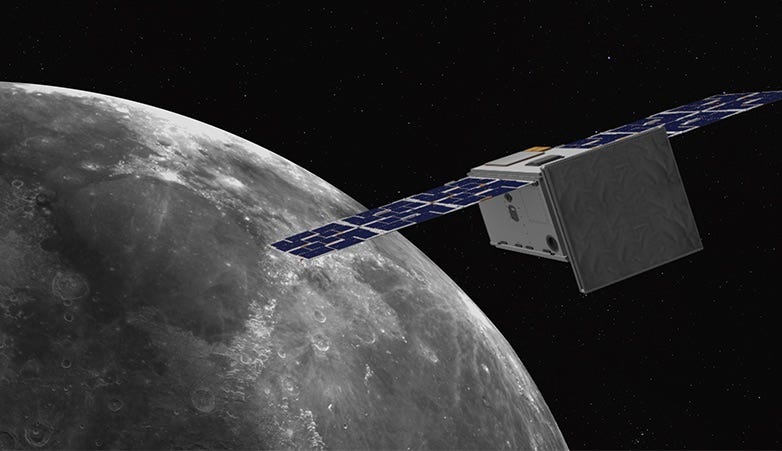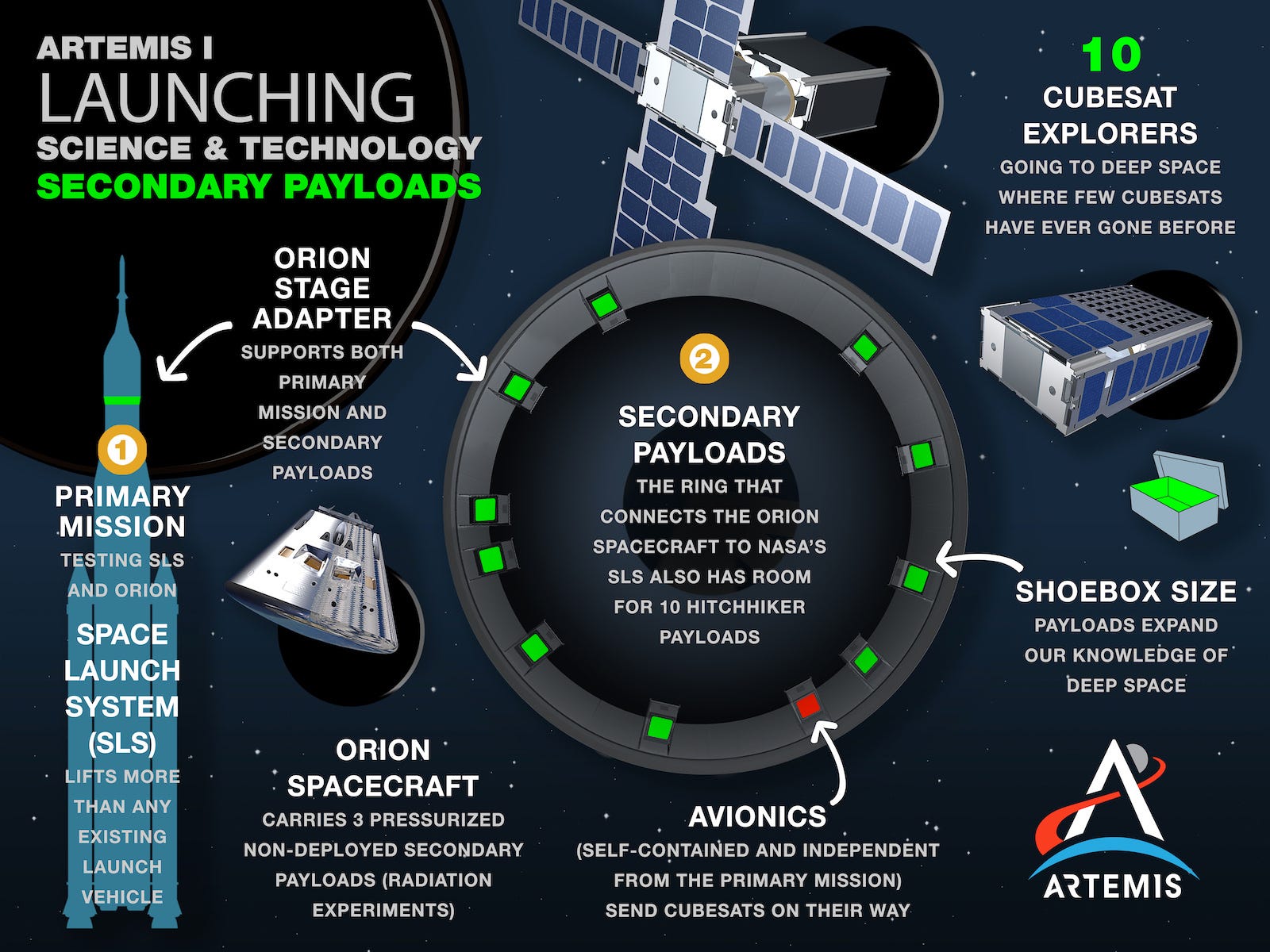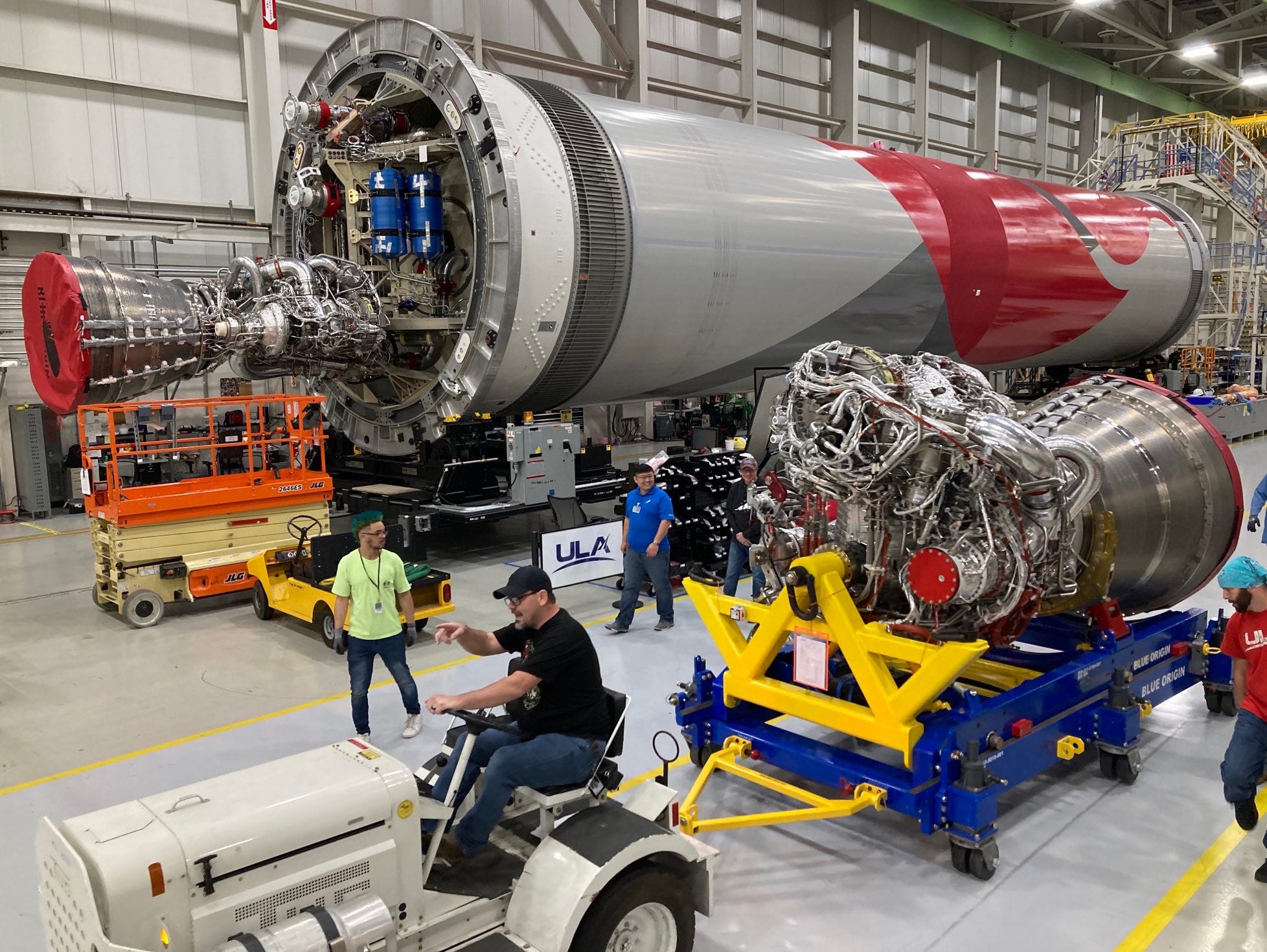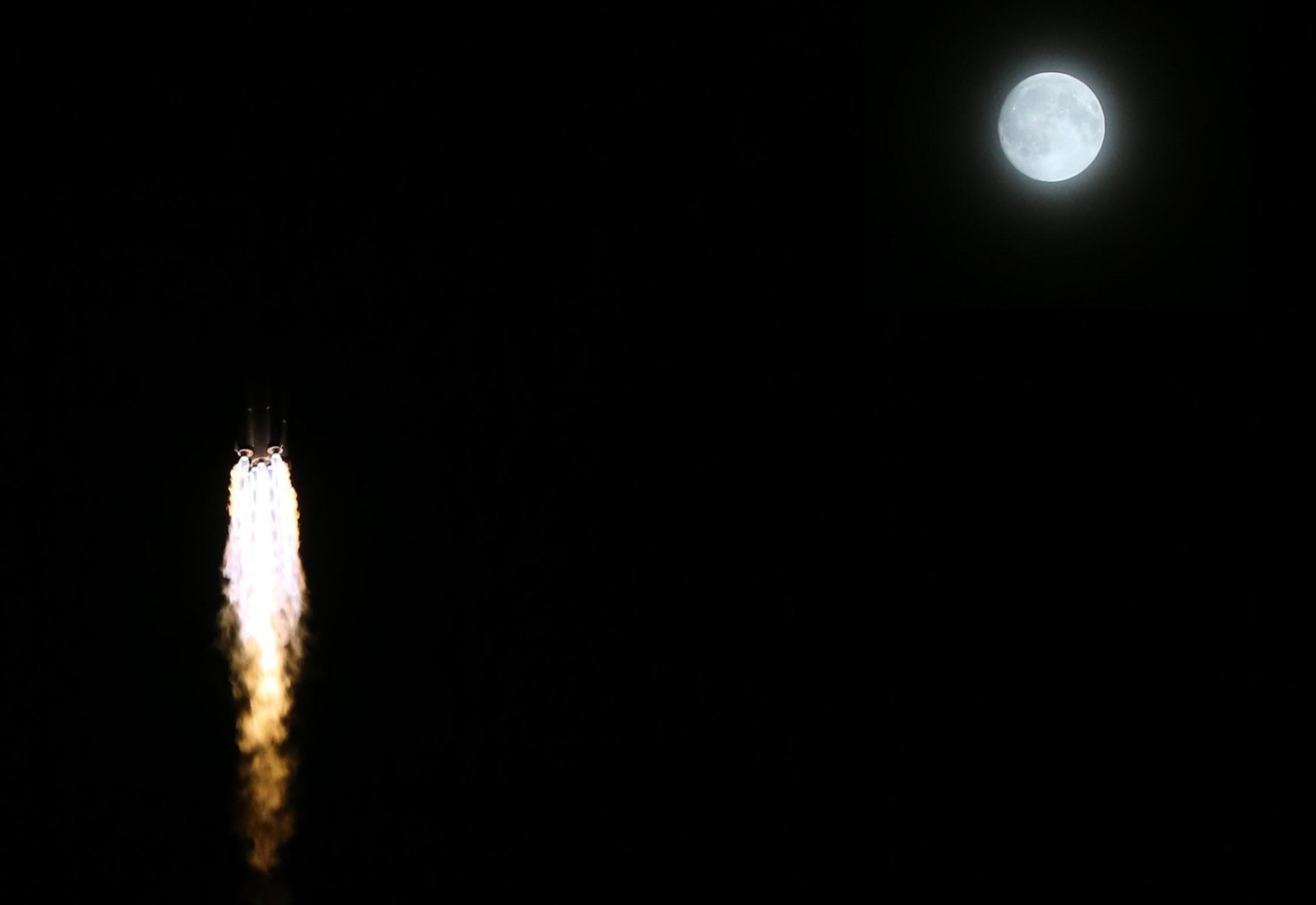Moon Monday #102: CAPSTONE and SLS prep for rendezvous with Luna, and a load of exciting future mission updates
A public service announcement since Moon Monday is my most read space (pun intended): With everything happening at Twitter, many people are flocking to Mastodon and/or other platforms. As an open Web enthusiast who is on Mastodon and similar socials since years, I think that’s great but misses the point. As a writer who professionally depends on, benefits from, and leverages much more of what the open Web has to offer, I’m confident the only way to truly own your digital thoughts and the connection to your audience is to have a blog, which complements your digital social spaces by being a portable home for your longform, notable or curated thoughts. I’m familiar with nearly all modern blogging platforms so if you’d like to get started, I’m happy to help based on your needs and goals.
CAPSTONE gets ready to orbit the Moon
On October 3, the NASA-funded and Advanced Space-led CAPSTONE spacecraft completed its fourth trajectory correction maneuver when approaching the Moon from about 111,400 kilometers away. With two more maneuvers to follow soon, the spacecraft is on track for lunar orbital capture on November 13.
CAPSTONE’s last such maneuver was in early September, near the end of which the spacecraft started tumbling and put itself in safe mode. Over the next couple of weeks, teams recovered the spacecraft, determined a partially open valve in one of the eight thrusters to be the issue’s root cause, and uploaded new commands to ignore that thruster which successfully helped CAPSTONE regain full, 3-axis attitude control. Teams are operating the spacecraft keeping in mind the faulty valve so here’s hoping for a successful lunar orbital capture.

NASA’s SLS rocket is on the launchpad again, hopefully for the last time
NASA transported the fully stacked SLS rocket to its launchpad on November 4. The agency is targeting launching SLS on November 14 for the much-awaited Artemis I mission to send an uncrewed Orion spacecraft around the Moon and back. As part of the maintenance and repairs while the rocket stack was at its assembly building, NASA recharged batteries of several elements of the rocket and its payloads.
However, in an email following a media briefing last week NASA said that only four of the 10 CubeSats onboard Artemis I—BioSentinel, NEA Scout, EQUULEUS and OMOTENASHI—have been recharged. Orion’s Stage Adapter structure prevents access to the other CubeSats, rendering them less likely to complete their missions since they were last charged last year. In retrospect, clearly it would’ve been better if NASA had accommodated these 14-kilogram CubeSats as secondary rideshares on other lunar missions just like the agency most recently did for Lunar Flashlight.

Many thanks to Epsilon3 for sponsoring this week’s Moon Monday.
Thanks also to Andrea Battisti and Henry Throop for supporting my independent writing.
Astrobotic’s first Moon landing mission past key preparation milestone
One of the most pressing causes of delay for Astrobotic’s first Moon landing mission part of NASA’s CLPS program has been its ride to space—the ULA Vulcan rocket—not being ready on time. Years later than expected, Blue Origin shipped the twin BE-4 engines to ULA in October, which together with the also recently received twin side boosters will power Vulcan’s first stage during the mission’s launch targeting Q1 2023.

Now the major source holding back the launch could be Astrobotic’s lander itself, which though almost assembled is yet to go through the extensive space environmental testing process. Considering that ispace Japan’s similar first lunar lander targeting launch this month took about four months to complete its equivalent testing, the timeline looks pretty tight for a Q1 2023 launch.
Relatedly, Astrobotic announced last week that they have validated their terrain mapping and navigation system on Earth by mounting relevant hardware on a plane during a week-long lunar-like flight. Astrobotic is incorporating lessons from the test to better operations of its actual first Moon landing as well as to upgrade hardware on their second (CLPS) Moon mission which will deliver NASA’s water-studying VIPER rover to the Moon’s south pole in 2024.
Exciting progress on future missions

Like the early days of forging and acting towards an ambitious goal, progress on pieces that will be part of future lunar missions intrigues and excites. Last week saw many such developments unfold.
- Andrew Jones reports that China has successfully conducted a series of hot fire tests of engines that will power an upcoming super heavy-lift rocket designed to enable lunar landing. Derived from China’s existing, venerable Long March 5, a pair of these new rockets would be able to launch a crewed spacecraft and (separately) a landing system to lunar orbit, which would allow two astronauts to land on the Moon. Capable of launching up to 27,000 kilograms on a lunar trajectory, the rocket would match the capacity of NASA’s current SLS Moon rocket. While China hasn’t yet formally approved a human lunar landing project, it has long begun building many of its necessary elements.
- Intuitive Machines, the company that currently has three Moon landings being lined up for NASA as part of the agency’s CLPS program, opened its “Flame Range” facility in Houston last week for the development, testing and qualification of its own methalox lunar spacecraft engines. Intuitive is also nearing construction of its Lunar Production and Operations Center over there.
- Eric Berger has an excellent report on NASA’s recent briefing concerning SpaceX’s HLS Starship that will land the first Artemis astronauts on the Moon mid-decade. Now that SpaceX is manufacturing one Starship Raptor 2 engine a day, NASA says SpaceX has done “very well” in alleviating that as one of the three top risks with the rocket. Pending an FAA license, SpaceX is currently targeting early December for the first Starship flight to Earth orbit but Q1 2023 is more likely. Eric’s report also touches on SpaceX’s plan to have a pre-filled Starship propellant depot in Earth orbit to optimize its Artemis and other flights.
- Rocket Lab has delivered the 70-kilowatt solar panels for the Power and Propulsion Element of the upcoming NASA-led international Gateway lunar orbiting station launching in 2024. The company acquired SolAero earlier this year who were originally contracted for the panels.
- NASA completed the critical design review of the upcoming Block 1B configuration of the SLS rocket, which sports an enhanced upper stage capable of lifting an additional 10,000 kilograms cargo to the Moon than the current SLS variant launching the first three Artemis missions. The Block 1B, debuting on Artemis IV, will be able to launch virtually any day of the month due to its enhanced performance.
- NASA has released the draft “request for proposals” for the advanced crewed rover that Artemis astronauts will drive on the Moon later this decade and next. The agency is accepting industry feedback until December 1. NASA plans to release the final request for proposals for companies to bid on in early 2023.
→ Browse the Blog | About | Donate ♡
